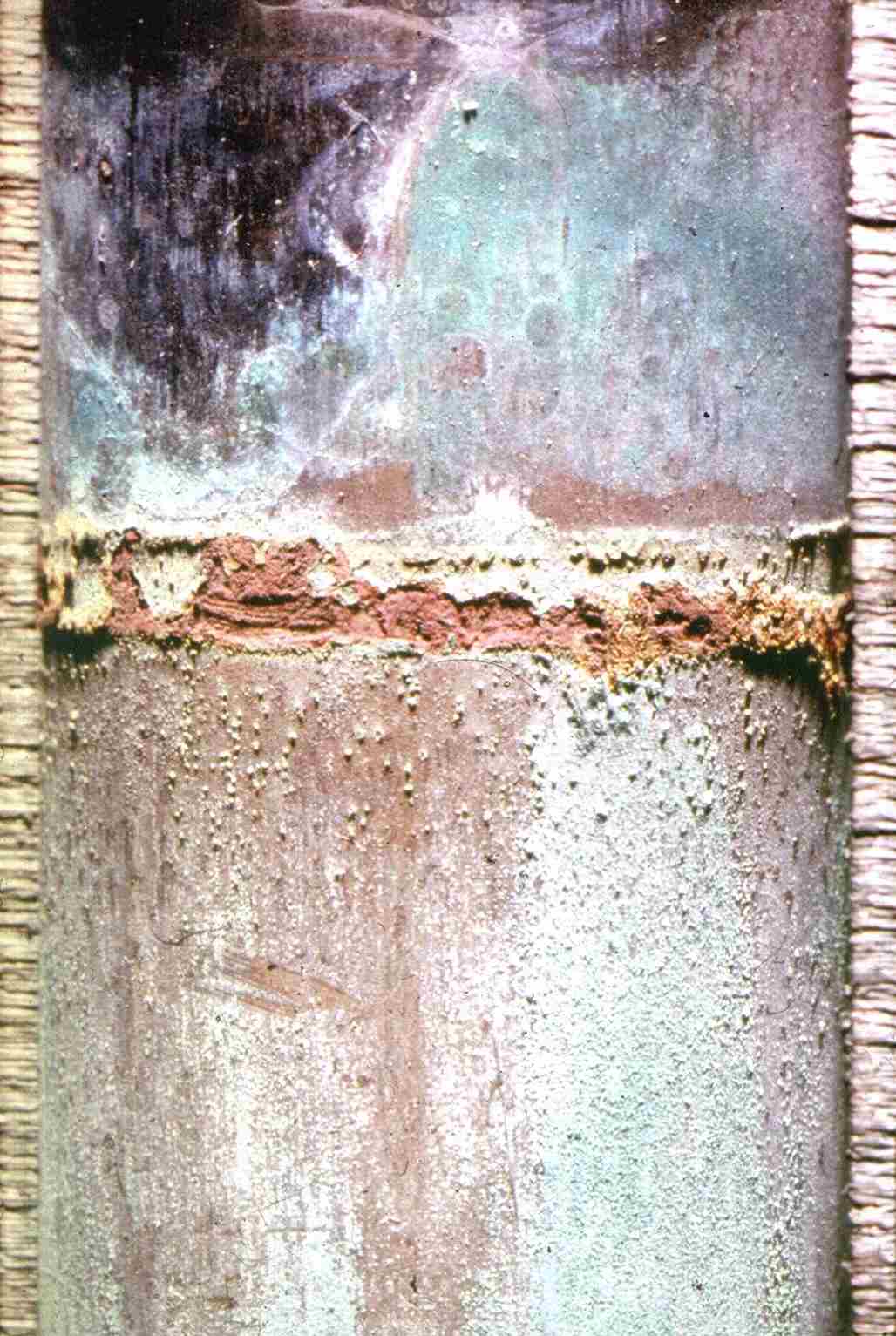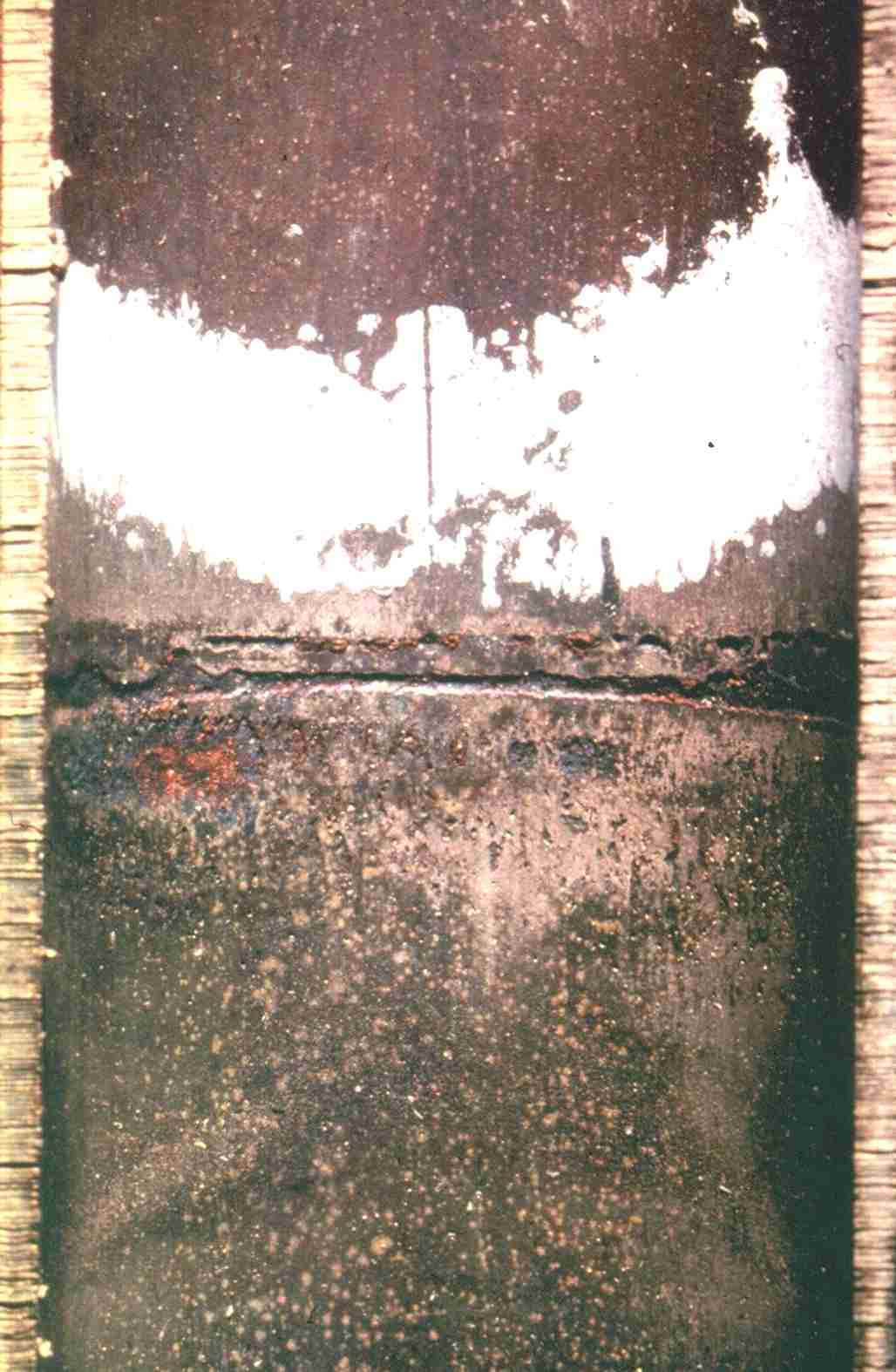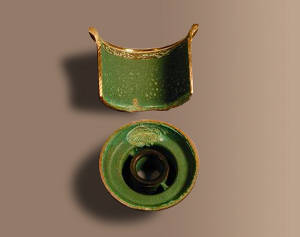Galvanic Corrosion 2
Seawater is a very corrosive liquid and there is an increasing trend to use high alloy stainless steels, nickel alloys or titanium, because of their high resistance to corrosion and the consequent reduction in maintenance costs, particularly offshore. The most common high alloy stainless steels are superduplex (Fe/25Cr/7Ni/3.5Mo/0.25N/0.7Cu/0.7W) and 6%Mo austenitic (Fe/20Cr/18-25Ni/6Mo/0.2N/0.7Cu). Commonly used nickel alloys include alloys 625 (Ni/20Cr/9Mo/3.5Nb) and alloy C-276 (Ni/15Cr/15Mo/3W). Titanium is usually used as commercially pure grades 1 or 2 and also grade 5 (Ti/6Al/4V), where higher strength is required.
All of these alloys have a high resistance to pitting and crevice corrosion in seawater. Some complex components require parts to be made of different alloys and the question then arises as to the risk of galvanic corrosion between these alloys. Research in a number of laboratories has shown that all of these alloys can be safely connected together in seawater, provided none of the alloys is working outside its limits of use.
In fact the work extended to cover all nickel-chromium alloys, where the molybdenum content exceeded 7wt%, and also all titanium alloys. Superduplex stainless steel piping has been safely connected to titanium plate heat exchangers on offshore platforms for many years. Piping in 6%Mo alloys has been safely connected to flanges overlaid with a range of nickel alloys, including alloys C-276 and alloy 686 (Ni/21Cr/15Mo/3.5W).
Posted on: 7th Oct 2016
Hot-Spot Corrosion
It is fairly well known that copper alloy heat exchanger tubes can suffer hot-spot corrosion in seawater. This usually occurs when seawater flows are low, < 0.5m/s, and process side temperatures are high. This typically occurs in clean seawater when local tube wall temperatures are ~130°C. When the seawater is polluted with sulphides, even at low concentrations, (<1mg/L), the threshold temperature decreases to 75 to 100°C.
What is less well known is that small amounts of ammonia in the seawater (1 to 2mg/L) can also cause hot spot attack. The ammonia is present as a pollutant and the seawater flow in the heat exchanger tubes does not need to be that low. Failures have been seen in heat exchangers with a nominal flow rate of 2m/s. In addition, the threshold temperature is very low and attack has been seen in tubes with very small heat transfer rates. The attack takes the appearance of rather broad pitting, which is deep in places. The pits are filled with copper oxide and there is metallic, re-deposited copper either at the base of the pit or mixed in with the copper oxide.
The alloy most susceptible to this form of attack is 90/10 copper-nickel, while the alloy most resistant (but not immune) is aluminium brass. The photo below shows pitting of 90/10 copper-nickel in the as-received condition and after acid cleaning. Once the tubes form a protective film in clean seawater, it is much harder to initiate hot-spot attack. Ferrous sulphate dosing at start-up can assist in the formation of protective films.


As-Received Acid Cleaned
Posted on: 21st Sept 2016
Austenitic and Duplex Stainless Steels
Austenitic stainless steels are widely used in the process industries because of their corrosion resistance, ductility and weldability. As corrosion processes become more aggressive it has been usual to switch from a low alloy, such as 304L or 316L, to other austenitic alloys with more molybdenum and, sometimes, nitrogen.
Austenitic alloys contain significant quantities of nickel and molybdenum, which are both expensive. There is now a full range of duplex stainless steels, with lower nickel and molybdenum contents, and, hence, a lower cost. A cost comparison in summer 2012 for hot rolled 10mm plate showed that if 316L is 1.0, 2101 duplex was 0.8. Similarly, 6%Mo austenitic was 3.1, while superduplex was 1.5.
For every austenitic stainless steel there is a duplex stainless steel with similar corrosion resistance and much higher strength, offering further potential cost savings. The modern duplex stainless steels are fully weldable with good toughness and ready availability in a wide range of product forms. Below are some common austenitic alloys with their duplex equivalents.
AUSTENITIC DUPLEX
316L 2101/ 2003
317L/ 904L 2205
6%Mo Z100/ 2507
Posted on: 7th Sept 2016
Dezincification 3
 Many brasses are subject to dezincification, particularly hot stamping and die-casting brasses. The use of dezincification resistant brass usually solves this corrosion problem. This water meter body failed because the level of impurities was too high and changed the structure of the brass to one susceptible to dealloying. The use of a corrosion test to BS EN ISO 6509 would have demonstrated the unsuitability of this composition in aggressive waters.
Many brasses are subject to dezincification, particularly hot stamping and die-casting brasses. The use of dezincification resistant brass usually solves this corrosion problem. This water meter body failed because the level of impurities was too high and changed the structure of the brass to one susceptible to dealloying. The use of a corrosion test to BS EN ISO 6509 would have demonstrated the unsuitability of this composition in aggressive waters.
Posted on: 21st Aug 2016
Corrosion Fatigue 2
 This pump shaft in nickel-copper alloy K-500 failed by corrosion fatigue. The fatigue started at a pit caused by crevice corrosion in seawater, something that this alloy can be susceptible to. The pit then acted as a stress raiser, which increased local stresses sufficiently to initiate fatigue. This was an expensive failure as significant damage was done to the pump internals when the failure occurred.
This pump shaft in nickel-copper alloy K-500 failed by corrosion fatigue. The fatigue started at a pit caused by crevice corrosion in seawater, something that this alloy can be susceptible to. The pit then acted as a stress raiser, which increased local stresses sufficiently to initiate fatigue. This was an expensive failure as significant damage was done to the pump internals when the failure occurred.
Posted on: 21st June 2016

